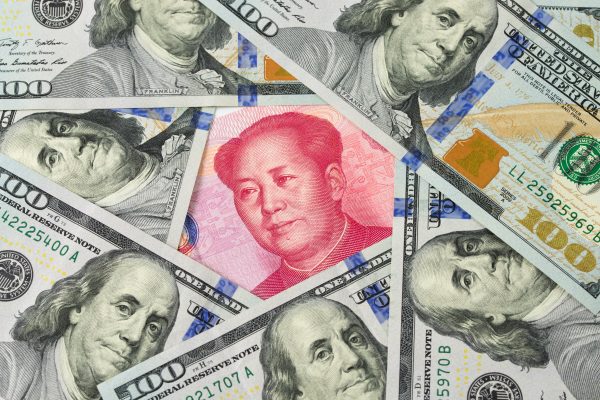
The world’s second largest bond market was rocked in February. Facing heightened geopolitical uncertainties amid the Russian invasion of Ukraine, and with bond yields narrowing with U.S. government treasuries, Western investors pulled out of Chinese sovereign debt in unprecedented fashion. Foreign investors sold out of $5.5 billion worth of Chinese government bonds throughout the month, the biggest month-over-month cut on record.
While it is clear that the sell-off was motivated by geopolitical uncertainties, there is speculation that a large proportion of the sell-off could have come directly from Russia’s central bank itself. Newly levied sanctions on Russian banking authorities have frozen their access to much of the nation’s $643 billion in foreign reserves. However, the nation holds more than 13 percent of its foreign reserves in yuan-based bonds. As such, Russia still has access to approximately $60 to $80 billion in liquid renminbi when they sell out of these bonds.
Whether or not the Russian central bank has called for this liquidation is uncertain; nonetheless, there were other factors that contributed to the large sell-off. Poignantly, Chinese government bond yields have slumped in recent months, with yield differentials compared to U.S. treasury bonds narrowing. Trading at about 2.816 percent yield, China’s 10-year government bond is only trading at about 70 basis points higher than the U.S. 10-year Treasury. At the start of the year, there was more than a 100-basis point differential between the two. As geopolitical tensions continue to rise, investors may continue to look to the safe haven asset that is the U.S. Treasury, which will drive Chinese yields lower. In fact, the 10-year note recently recorded its highest close since June 2019.
There is great uncertainty regarding a quick return in investor confidence, particularly as various pressures are beginning to weigh on investors. In addition to short-term geopolitical jitters, longer-term trends, including the regulatory crackdown of 2021, inflationary pressures, and China’s strict no-COVID policy, have made investors wary. The latter is of particular concern: this week a large-scale outbreak has occurred in the southern city of Shenzhen. Lockdown is resuming in various parts of the country, and up to tens of millions of citizens are facing restrictions.
Overall, the net outflow of foreign funds in February marks a surprising shift for foreign holdings of Chinese government bonds, which have prospered in recent years. Since Chinese government bonds joined the FTSE Russell World Government Bond Index in October 2021, inflows from foreign investors have averaged about 72 billion RMB each month. February marks the first monthly net outflow of foreign bond holdings since March 2021 and only the second since the onset of the pandemic.
Currently, foreign investors hold about 11 percent of Chinese sovereign debt. Notably, many foreign bond holders are looking for the People’s Bank of China to commit to monetary loosening before they double down on Chinese government debt. However, the PBoC has held firm on monetary policy since the beginning of the pandemic: China’s loan prime rate, a key benchmark for medium- to long-term loans, has only seen one meaningful reduction of ten basis points since the height of the pandemic. With geopolitical jitters, market uncertainty, and an unwavering monetary policy, China’s markets could see more outflows before things improve.
Foreign Holders of China’s Government Debt Jump Ship in February
Source: Frappler

0 Comments